
Cross Street Chapel is a Unitarian church in central Manchester, England. It is a member of the General Assembly of Unitarian and Free Christian Churches, the umbrella organisation for British Unitarians. [1]

Cross Street Chapel is a Unitarian church in central Manchester, England. It is a member of the General Assembly of Unitarian and Free Christian Churches, the umbrella organisation for British Unitarians. [1]

The Act of Uniformity 1662 imposed state control on religion by regulating the style of worship in the Church of England. However, many clergy rejected the restrictions, and of the 2000 ministers who were ejected from the established church, Henry Newcome established his own congregation that same year.
In April 1693 a new meeting-house was projected. Ground was bought on 20 June at Plungen's Meadow (now Cross Street); the building was begun on 18 July, a gallery was added as a private speculation by agreement dated 12 February 1694, and the meeting-house was opened by Newcome on 24 June 1694. [2] The "Dissenters' Meeting House" holds a special place in the growth of nonconformism within the city.
It was wrecked by a Jacobite mob during the 1715 England riots on 10 June [3] but it was rebuilt and enlarged. The building was renamed the Cross Street Chapel and became a Unitarian meeting-house c.1761. [4] It was destroyed during the Second World War Manchester Blitz in December 1940. A new building was constructed in 1959 and again in 1997.
In 2012, the chapel became the first place of worship to be granted a civil partnership licence when the law changed in England. [5]
During the construction of Manchester Metrolink's second city crossing in the City Zone, 270 bodies from what used to be the chapel's graveyard had to be exhumed and reburied in Chorlton’s Southern Cemetery. The work took place from 2014–17. [6]
The present structure dates from 1997. The Gaskell Room of the new building houses a collection of memorabilia of novelist Elizabeth Gaskell.
Urban historian Harold L. Platt notes that in the Victorian period "The importance of membership in this Unitarian congregation cannot be overstated: as the fountainhead of Manchester Liberalism it exerted tremendous influence on the city and the nation for a generation." [7]

The General Assembly of Unitarian and Free Christian Churches is the umbrella organisation for Unitarian, Free Christians, and other liberal religious congregations in the United Kingdom and Ireland. It was formed in 1928, with denominational roots going back to the Great Ejection of 1662. Its headquarters is Essex Hall in central London, on the site of the first avowedly Unitarian chapel in England, set up in 1774.
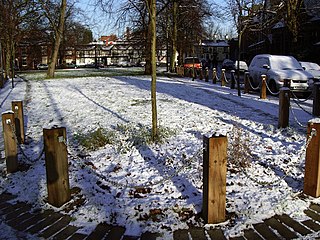
Chorlton-cum-Hardy is a suburban area of Manchester, in Greater Manchester, England, three miles (4.8 km) southwest of the city centre. Chorlton ward had a population of 14,138 at the 2011 census, and Chorlton Park 15,147.
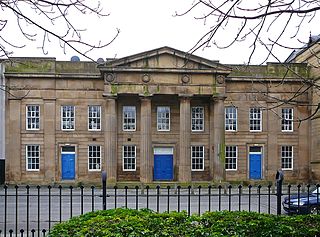
Chorlton-on-Medlock is an inner city area of Manchester, in the county of Greater Manchester, England.

Thomas Worthington was a 19th-century English architect, particularly associated with public buildings in and around Manchester. Worthington's preferred style was the Gothic Revival.

Monton is a village in the City of Salford, Greater Manchester, England. It is contiguous with nearby Eccles, Salford and Swinton.
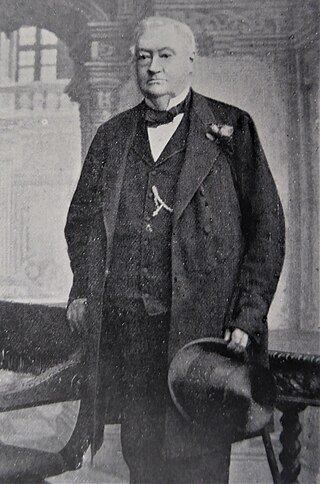
Thomas Bayley Potter DL, JP was an English merchant in Manchester and Liberal Party politician.

William Gaskell was an English Unitarian minister, charity worker and pioneer in the education of the working class. The husband of novelist and biographer Elizabeth Gaskell, he was himself a writer and poet, and acted as the longest-serving Chair of the Portico Library from 1849 to his death in 1884.

Upper Chapel is a Unitarian chapel on Norfolk Street in Sheffield City Centre. It is a member of the General Assembly of Unitarian and Free Christian Churches, the umbrella organisation for British Unitarians. The Chapel is Grade II listed.

The Upper Brook Street Chapel [Protestant Dissenting] also known as the Unitarian Chapel, the Welsh Baptist Chapel, and later Islamic Academy is a former chapel of historical architectural importance with an attached Sunday School on the east side of Upper Brook Street, Chorlton-on-Medlock, Greater Manchester, England. It is said to be the first neogothic Nonconformist chapel, having been constructed for the British Unitarians between 1837 and 1839, at the very beginning of the reign of Queen Victoria. It was designed by Sir Charles Barry, later architect of the Palace of Westminster.
Henry Newcome was an English nonconformist preacher and activist.
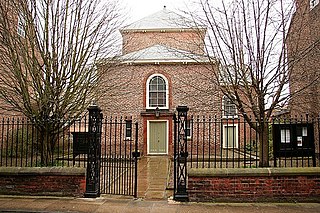
York Unitarian Chapel is a building on St. Saviourgate, York, England. It is a member of the General Assembly of Unitarian and Free Christian Churches, the umbrella organisation for British Unitarians.
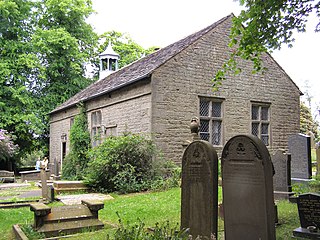
Rivington Unitarian Chapel is an active place of Unitarian worship in Rivington, Lancashire, England. It was founded in 1703, although its congregation dates to 1667. It is designated as a Grade II* listed building with some restoration in 1990, and hs ongoing preservation.
John Chorlton was an English presbyterian minister and tutor.
James Coningham (1670–1716) was an English presbyterian divine and tutor.

The Octagon Chapel, Liverpool, was a nonconformist church in Liverpool, England, opened in 1763. It was founded by local congregations, those of Benn's Garden and Kaye Street chapels. The aim was to use a non-sectarian liturgy; Thomas Bentley was a major figure in founding the chapel, and had a hand in the liturgy.

The Unitarian Church in Ireland presently consists of two Congregations, Dublin and Cork, part of the Synod of Munster, in the Republic of Ireland, which has itself been part of the Non-Subscribing Presbyterian Church of Ireland since 1935. Some congregations remain closely associated with the General Assembly of Unitarian and Free Christian Churches. These churches would abide by the traditional Unitarian principles of Freedom, Reason, and Tolerance.

Renshaw Street Unitarian Chapel was a Unitarian place of worship in Mount Pleasant, Liverpool, England. It operated from 1811 until the 1890s and was particularly well frequented by ship-owning and mercantile families, who formed a close network of familial and business alliances.
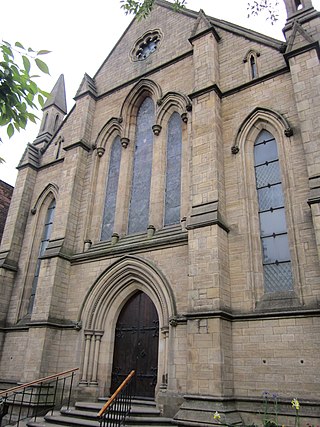
Bank Street Unitarian Chapel is a Unitarian place of worship in Bolton, Greater Manchester, England.
Plunket Street Meeting House, was the site of two churches, first a Presbyterian Church, then an independent reformed faith evangelical church on Plunket Street, Dublin. It was situated between Patrick's St. and Francis St.